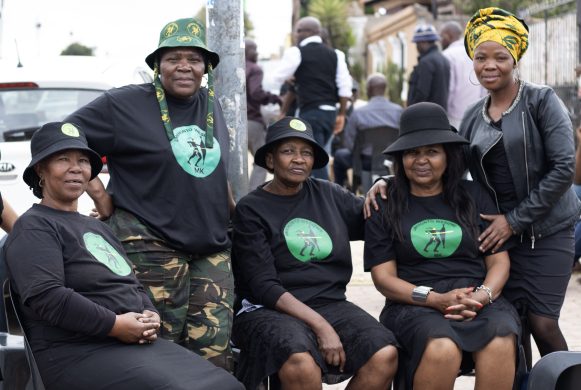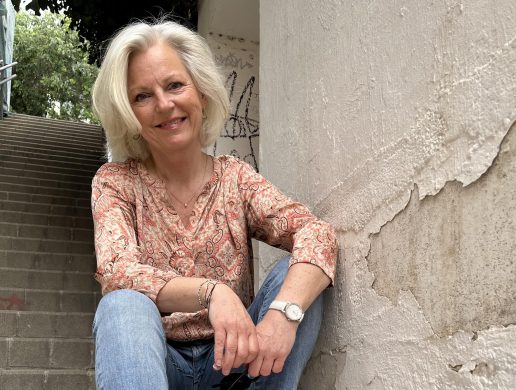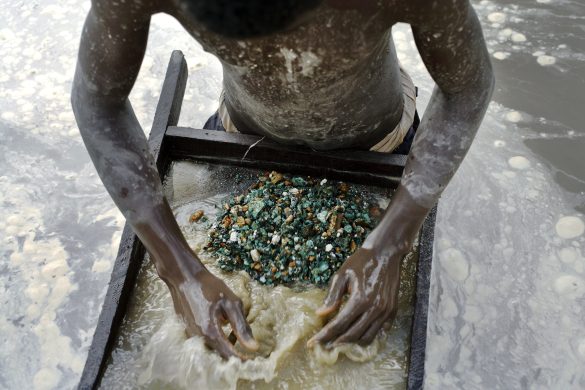Sådan lyder et af debat-temaerne lige nu om, hvordan man kan reformere verdens største fødevarebistand, så den kommer langt flere fattige til gavn – forsigtige fremskridt, men mægtige landbrugs- og skibsfartsinteresser kæmper imod, som de altid har gjort.
NEW YORK, 14 April 2014 (IRIN): Efforts to improve the way the US government distributes roughly two billion US dollar (10,6 milliarder DKR) in international food aid each year achieved some successes in the recently enacted Agriculture Act of 2014 – commonly referred to as the Farm Bill.
But the food aid mechanism used by the world’s largest donor continues to prioritize the needs of US commercial interests.
The POSITIVES are:
A pilot project in the 2008 Farm Bill that tested the feasibility of local and regional procurement (opkøb) of food aid during emergencies has been transformed into a regularized programme that will provide 80 million dollar for local and regional procurement (LRP) each year.
In addition, the new Farm Bill increases from 13 to 20 percent the percentage of funding in the largest food aid programme, Food for Peace (or Title II), that can be spent on non-emergency programmes with cash-based resources or commodities rather than through the much-criticized vehicle of monetized food aid (videresalg af donerede fødevarer).
A major flaw in the system
Monetization is a major flaw (svaghed) in the US food aid system, in which US grain is donated to NGOs and other “cooperating sponsors”, who then sell the food in recipient countries to raise money for their programmes.
Almost all other major aid agencies have given up the practice because selling the donated food distorts (forvrider) local markets, and is detrimental to (skadelig for) long-term food security.
“The main favourable developments in the new Farm Bill were the authorization of a permanent (if modest) LRP programme (for lokale og regionale opkøb af mad) and a significant increase in the cap on (loft over) funding cooperating sponsors, which effectively allows USAID (USAs Danida, red.) to end open monetization of food aid,” said Chris Barrett of Cornell University, a leading food aid analyst, adding:
“These are important developments. But the Farm Bill still fell well short of providing USAID with flexibility to use cash, vouchers (madkuponer) or LRP where those would be the most appropriate food assistance tools”.
“This is so, because the main US food aid programme (Title II of PL480) remains legislatively restricted to buy commodities in the US and to ship from the US, at least half of the cargo on US flag vessels”.
“This causes needless waste and delay without generating any significant benefit to the US economy. So the 2014 Farm Bill can be reasonably assessed as modest progress,” Chris Barrett stated.
“Unprecedented” debate
Yet reform advocates have emerged from the legislative process hopeful for the future.
“I have been working on this issue for 10 years,” said Eric Munoz, senior policy adviser for Oxfam America, noting:
“I have been through two Farm Bills. And this is the first time in my experience when there has been a serious debate and where real proposals were put on the table and where there was a real demand for the special interests who are supporting the status quo to defend the programme in its current form”.
“This is unprecedented (uden fortilfælde). I don’t think that the conversation is over yet and certainly from our perspective we will continue to press to see that inefficiencies in the programme are addressed.”
Among the most noteworthy developments was an amendment to the Farm Bill (jointly offered by a Republican, Ed Royce, and a Democrat, Eliot Engel) that proposed giving USAID the flexibility to use up to 45 percent of food aid funds for LRP, cash transfers or food vouchers.
Worries over public relation for America
During a hearing convened by the House Committee on Foreign Affairs, some Congress members expressed worry that the increased reliance on transfers or vouchers would deny the US the public relations benefit of commodity donations.
See video of hearing in the link below.
“This is what food aid looks like,” said Congressman Adam Kinzinger, a Republican holding up a photograph of a large bag with US markings.
“It says, `From the American people. USAID.’ It makes it very clear that this is an American product.”
If food aid comes in the form of a voucher (madkupon), he said, the generosity of the US will not be properly advertised.
“I think we are losing a very impactful thing that we do, which is that we put right in front of the people of Afghanistan or Darfur or wherever that this is a gift grown in and from the American people,” he said.
“Congressman, if you could put up the picture of the food voucher,” said Andrew Natsios, administrator of USAID from 2001 to 2006, a hearing witness, referring to a second photograph: “It says on it, `US aid from the American people’ on the right side.”
“Yeah, it is not quite the same as a bag with food,” replied Congressman Kinzinger.
Powerful shipping interests
Læs videre på
http://www.irinnews.org/report/99940/new-us-farm-bill-provides-hope-for-food-aid-reform














